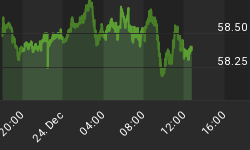Argentina offers one of the few places on earth where oil companies are not suffering from the full force of the collapse in prices.
Argentina regulates oil prices, a policy originally intended to insulate the public from the whims of the market, protecting people from triple-digit crude prices. But with the crash in prices since mid-2014, the effect of the regulation has reversed: motorists are now effectively subsidizing the oil industry.
Prices for light oil are set at $67 per barrel and natural gas prices fixed at $7.50 per million Btu (MMBtu). That means consumers are not reaping the benefits of cheap fuel. The higher prices they pay offer a huge lifeline for the oil industry.
From the consumer's standpoint, that may not sound like a great deal. But it may help Argentina's shale industry keep their momentum going. Argentina holds some of the largest shale potential outside of the United States. According to the EIA, Argentina has over 800 trillion cubic feet of unproved technically recoverable shale gas reserves (more than the 622 tcf located in the U.S.) and 27 billion barrels of shale oil, which is less than only the U.S., Russia, and China.
The bulk of Argentina's shale reserves are located in the Vaca Muerta, a vast shale basin in central Argentina. The Vaca Muerta has attracted companies from around the world, including ExxonMobil, Chevron, Royal Dutch Shell and Gazprom.
Drilling activity has continued to grow, but high costs and infrastructure constraints have prevented production levels from rocketing skywards as they did in places like Texas or North Dakota.
But regulated oil prices could also prevent Argentina from suffering the effects of the bust that are now clearly visible across the well-known shale areas of the United States.
"This is so important, strategically," said the outgoing CEO of state-owned YPF, Miguel Galuccio, referring to regulated prices, according to the WSJ.
Last week, Galuccio announced that production from the Vaca Muerta continued to inch upwards, having reached 50,000 barrels of oil equivalent per day (boe/d), up from 44,000 boe/d last year.
But Argentina faces profitability challenges even with regulated oil prices. Galuccio said that the profit from YPF's shale oil and gas production was "marginal." YPF announced spending reductions as well as the decision to reduce its rig count. The company spent only $4 billion in 2015, down from the original $6 billion it had planned on spending. YPF will trim another 25 percent from its budget for 2016.
Galuccio argued, though, that the economics will improve as drilling scales up, techniques are refined, and operators learn more about the basin. He said that YPF has already reduced costs from the average shale well from $16 million to $13 million a piece. He expects that costs will decline to $10 million per well in 2016.
Regulated oil prices can buy YPF - and other companies, including YPF's joint venture partner, Chevron - some space to continue to drill and bring costs down. "We are doing this to sustain activity and employment," said Argentina's labor minister, Jorge Triaca, referring to artificially high prices.
"You've got to incentivize people to do exploration and development, especially when prices are low," said Ali Moshiri, the top Chevron official in Latin America said. "If Argentina carries on with these incentives, it will encourage others to come to the country."
Meanwhile, a corporate makeover is also underway. Argentina's new President Mauricio Macri pushed YPF's CEO Miguel Galuccio out the door last week. The FT reported that Argentina's new energy minister, Juan José Aranguren, was not fond of Galuccio. In particular, he was critical of ballooning debt levels that took place under Galuccio's management. Galuccio will be succeeded by a former JP Morgan executive.
But Galuccio is also credited with turning YPF's fortunes around. Since taking the helm in 2012 after the government of former President Cristina Fernandez de Kirchner nationalized YPF, he improved the company's operations and achieved production increases.
President Macri and the new YPF CEO hope to keep the momentum going. Whether or not having the Argentinian public subsidize oil prices is smart policy, it offers the shale industry a rare bright spot for the energy industry.
Article Source: http://oilprice.com/Energy/Energy-General/67-Oil-Has-All-The-Majors-Converging-Here.html
By Nick Cunningham of Oilprice.com
















